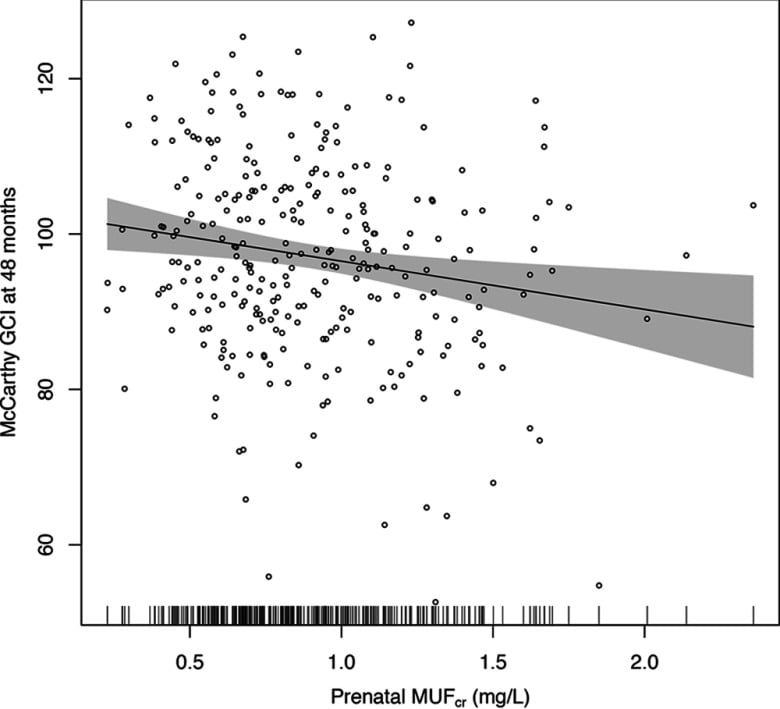Abstract
BACKGROUND:
Some evidence suggests that fluoride may be neurotoxic to children. Few of the epidemiologic studies have been longitudinal, had individual measures of fluoride exposure, addressed the impact of prenatal exposures or involved more than 100 participants.
OBJECTIVE:
Our aim was to estimate the association of prenatal exposure to fluoride with offspring neurocognitive development.
METHODS:
We studied participants from the Early Life Exposures in Mexico to Environmental Toxicants (ELEMENT) project. An ion-selective electrode technique was used to measure fluoride in archived urine samples taken from mothers during pregnancy and from their children when 6-12 y old, adjusted for urinary creatinine and specific gravity, respectively. Child intelligence was measured by the General Cognitive Index (GCI) of the McCarthy Scales of Children’s Abilities at age 4 and full scale intelligence quotient (IQ) from the Wechsler Abbreviated Scale of Intelligence (WASI) at age 6-12.
RESULTS:
We had complete data on 299 mother-child pairs, of whom 287 and 211 had data for the GCI and IQ analyses, respectively. Mean (SD) values for urinary fluoride in all of the mothers (n=299) and children with available urine samples (n=211) were 0.90 (0.35) mg/L and 0.82 (0.38) mg/L, respectively. In multivariate models we found that an increase in maternal urine fluoride of 0.5mg/L (approximately the IQR) predicted 3.15 (95% CI: -5.42, -0.87) and 2.50 (95% CI -4.12, -0.59) lower offspring GCI and IQ scores, respectively.
CONCLUSIONS:
In this study, higher prenatal fluoride exposure, in the general range of exposures reported for other general population samples of pregnant women and nonpregnant adults, was associated with lower scores on tests of cognitive function in the offspring at age 4 and 6-12 y. https://doi.org/10.1289/EHP655.
